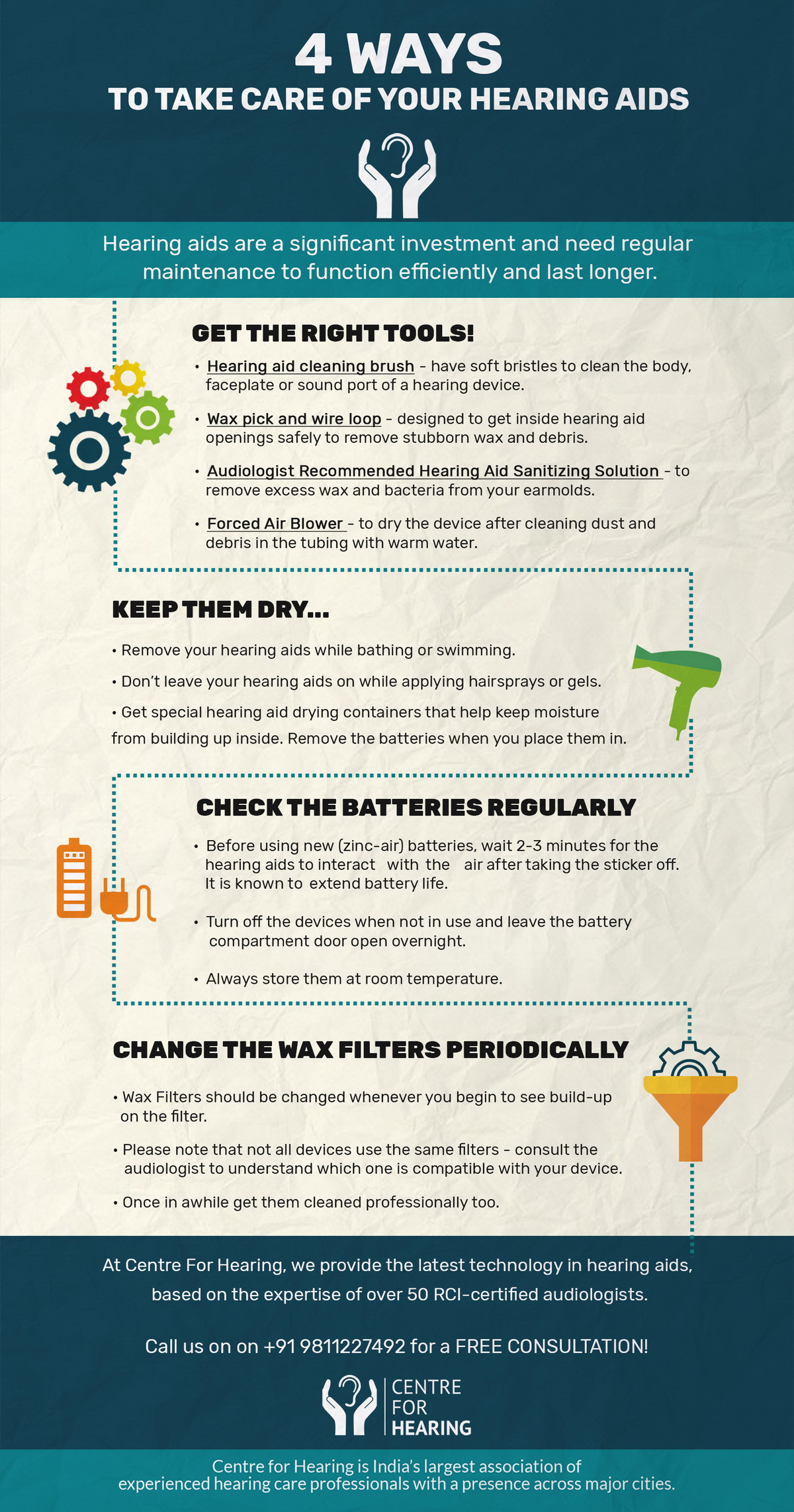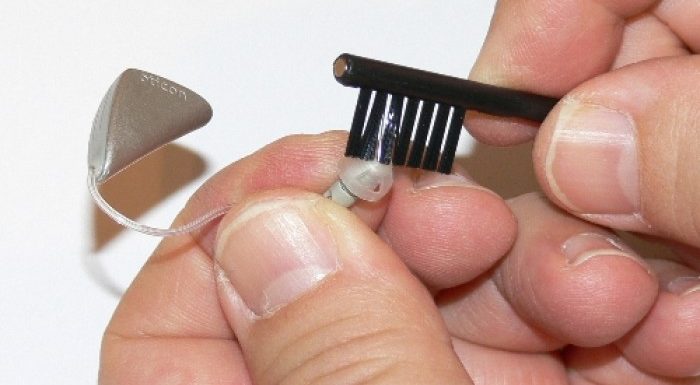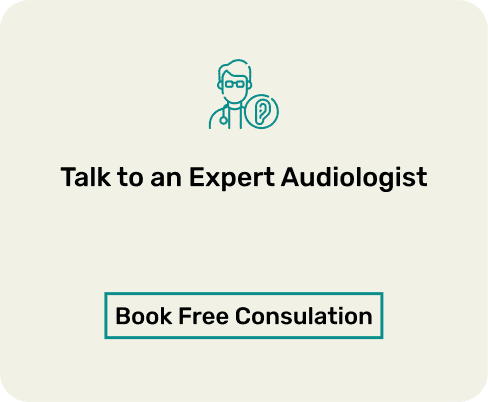Cleaning Hearing Aids regularly can help this function efficiently and last longer.
Our ears are closed spaces that aren’t cleaned as thoroughly as the rest of our bodies. Hearing aids are, therefore, susceptible to issues like moisture and earwax. These can affect the sound quality, battery life, and durability of the devices. Also, the affected individual takes some time to adjust to the hearing aids – the lifestyle changes needed to accommodate the use of hearing aids cannot be made immediately.
To ensure that your hearing aids help you with reliable, long-term hearing, it is essential to keep them clean, along with routine maintenance.
Let’s look at some ways you can keep cleaning hearing aids in good working order for longer.
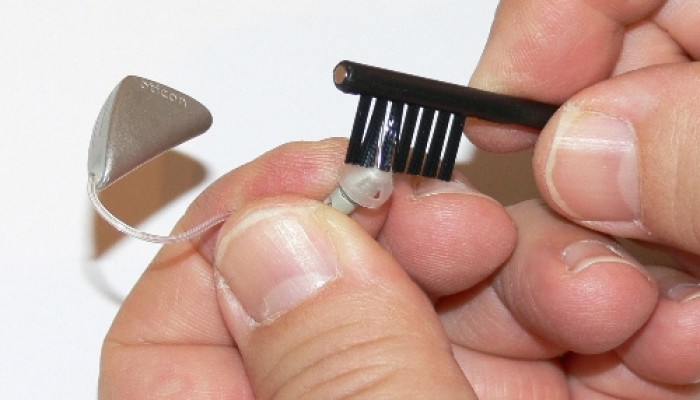
4 Methods for Cleaning Hearing Aids
While hearing aid manufacturers try their best to make sure that your hearing aids serve their purpose over a longer period of time, the user must also do his/her bit. Carelessness or not cleaning hearing aids can lead to damage and the need for replacement. This can be costly and time-consuming, as well as affecting your quality of life.
Therefore, it is important to follow the instructions and guidelines provided by your audiologist and the hearing aid manufacturer. Replacements could take a while, and it is hardly convenient to live without hearing aids, especially in cases of severe or profound hearing loss.
Here are a few ways users can maintain their hearing aids:
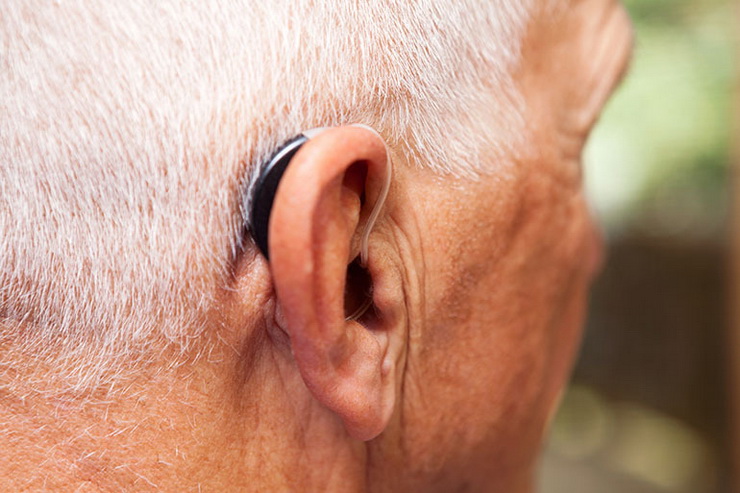
1. Get The Right Tools!
Invest in a wax pick and brush for at-home cleaning. Earwax can accumulate in the opening at the end of a hearing aid where the sound comes out, causing muffled sound or feedback (whistling). If not cleaned at regular intervals, it can damage the receiver. The pick and brush can be used to clean it gently. Do not use alcohol or other cleaning agents to clean the hearing aids.
- Cleaning hearing aid brush: This is helpful for all types of hearing aids; these have soft bristles to clean the body, faceplate or sound port of a hearing device.
- Wax pick and wire loop: These tools are designed to get inside hearing aid openings safely to remove stubborn wax and debris.
- MultiTool: These versatile tools combine the brush and wax loop for an all-purpose option.
- Hearing Aid Sanitizing Solution: Use a sanitizing solution recommended by your audiologist to remove excess wax and bacteria from your earmolds.
- Forced Air Blower: If there’s dust or debris in the tubing that connects the ear molds to the hearing aids, you will need to clean them with warm water. Detach the tubing from the hearing aid, and soak it with the ear molds in warm, soapy water for a few minutes. Remove them, dry them completely with a towel, and use the forced air blower to force the excess water from the tubing and the vent of the ear molds.
2. Keep Them Dry for Cleaning Hearing Aids
Remove your hearing aids while bathing or swimming. Both water and soap can damage them. Don’t leave your hearing aids on while applying hairsprays or gels.
Also, it is important to minimise moisture in the hearing aids. Special hearing aid drying containers help keep moisture from building up inside the hearing aids and lengthen their life. Ensure you remove the hearing aid’s batteries before placing them in the storage containers.
Simple silica gel capsule storage containers are usually a part of the default packaging from the company. However, we usually recommend investing in an electronic dry kit to be truly effective – particularly for those living in coastal or wet areas. Ask your hearing care professional for more information.
3. Check the batteries regularly!
Hearing aid batteries typically last for about 1-2 weeks, based on the amount of time the user has the hearing aid on.
The life expectancy of the hearing aid batteries depends on:
- The degree of the affected individual’s hearing loss.
- The amount of time the hearing aids are worn.
- The ambient condition of the environment.
- The age of the batteries themselves.
Tip: Before using new (zinc-air) batteries, wait 2-3 minutes for the hearing aids to interact with the air once you’ve removed the sticker. It is known to extend battery life.
While there are no foolproof ways to extend the life of batteries, turning the hearing devices off when not in use and leaving the battery compartment door open overnight can keep the power from being wasted.
Always store them at room temperature since exposure to heat and humid environments will shorten battery life. Also, batteries shouldn’t be carried loose in pockets, a purse or a backpack where they might come into contact with other metal objects like coins or keys that can short-circuit the hearing aid batteries.
Note: Several companies have now launched rechargeable hearing aids.
4. Change The Wax Filters Periodically!
Along with removing earwax from your device, you must replace the wax filter or guard periodically. The filter prevents wax from reaching the internal components of the hearing aid and damaging them. This should be done whenever you see a build-up on the filter.
Please note that not all devices use the same filters – consult the audiologist to understand which one is compatible with your device.
Final Takeaway
Ensuring the optimal performance of your hearing aids involves regular maintenance both at home and through professional care. Cleaning hearing aids, especially the intricate channels, is crucial for their longevity. Our trained professionals at Centre For Hearing® use specialized vacuums to delicately remove wax from those hard-to-reach areas. They are adept at safely cleaning vents, microphone screens, windscreens, and receivers to maintain your device’s functionality.
Visit our clinics conveniently located in Delhi/NCR, Chandigarh, Maharashtra, Bihar, Jharkhand, and Punjab for expert care. Call us at +91 9811 227 269 to schedule a complimentary consultation with our hearing care specialists and ensure your hearing aids receive the meticulous attention they deserve.
